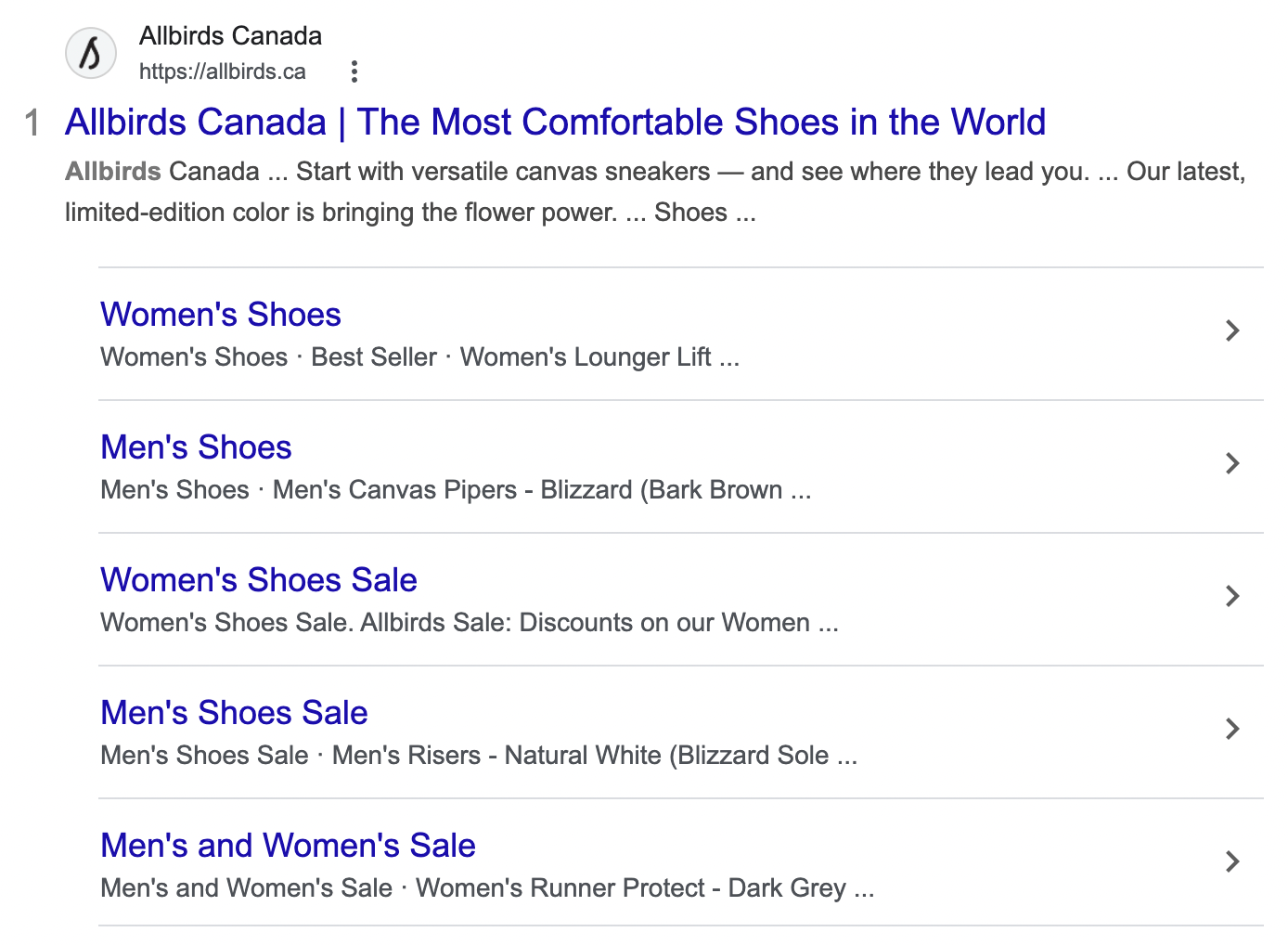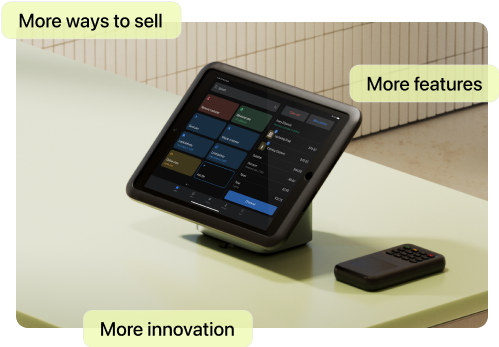If you run a boutique in a busy shopping center, foot traffic doesn’t mean much unless those feet walk into your store. Similarly, no matter how many eyes see your Google Ads, they deliver the most value when people actually click through to your ecommerce shop.
Just like customers walking through your door, those Google Ads clicks can be measured and serve as a useful metric to determine whether your ads are performing as expected.
Learn what a click-through rate (CTR) is in the context of Google Ads, what makes for a “good” click-through rate (hint: it depends on your goals) and how to calculate it, and tips to improve your Google Ads CTR.
What is Google Ads CTR?
Click-through rate is the percentage of clicks a specific link receives relative to how many times it was shown in an email, on a search engine results page (SERP), on a webpage, or in a digital ad. In the context of Google Ads, CTR measures the percentage of people who click through your ad to get to your ecommerce store. A higher CTR can signal your ads are resonating with your audience. The higher your CTR, the more opportunity you have to convert clicks into sales.
How to calculate CTR for Google Ads
To calculate your click-through rate in Google Ads, divide the number of clicks by the number of times it was shown (impressions). Use this formula:
CTR = (number of clicks / number of impressions) x 100
For example, if your ad was shown 10,000 times and received 500 clicks, your CTR would be 5%:
CTR = (500 / 10,000) x 100
CTR = 5%
What counts as a “good” Google Ads CTR?
A good CTR benchmark to aim for with non-branded Google Search campaigns is 5%; this is the benchmark Google sets for nonprofits that receive Google Ad grants. It’s the bar that performance marketers generally set for new, non-branded campaigns. Non-branded search campaigns target keyword phrases that don’t include your brand or products by name.
A good CTR for branded Google Search campaigns is generally 20%; since users are already searching for your brand, there’s a much higher likelihood they’ll click your ad and arrive at your website. Branded keywords contain the exact names of a brand or product. “Apple phone” or “iPhone,” for example, are branded keywords for Apple.
The benchmark for a good CTR can also vary by industry. On Google Search ads, ecommerce ads have an average CTR of 2.69%, while the industry average for travel and hospitality ads is 4.68%.
How to check your Google Search Quality Score
A good CTR isn’t just about outperforming benchmarks; it’s about exceeding Google’s expectation for your specific keyword in your market. Google’s Quality Score is a diagnostic metric for Google Search campaigns that tells you a keyword’s expected CTR based on historical performance.
To check a campaign’s Quality Score, follow these steps in your Google Ads account:
1. Click on your campaign.
2. Go to Audience, keywords, and content > Keywords.
3. Click on Columns and search for Quality Score.
4. Select the Exp. CTR and Exp. CTR (hist.) boxes.

The expected CTRs affect your Quality Score, which affects your cost-per-click (CPC) and visibility. In the screenshot below, the Quality Score is 5/10 with an expected historical CTR below average, which means the ad should be optimized.

Factors that influence CTR
Understanding the success of your click-through rate is more nuanced than comparing your CTR percentage with the industry average. There are more factors at play, including your campaign type, keyword type (branded vs non-branded), and bid strategy. Here’s how they all influence your CTR:
Type of Google Ads campaign
There are several types of campaigns you can run within your Google Ads account. You can’t compare CTR on a Search campaign to CTR on a Performance Max campaign, for example, because they have different goals and prioritize different ad placements, which result in different CTRs:
-
Search campaigns (high average CTR). These types of ads display at the top of the Google search results page and target users with high intent who are actively searching for a particular product or service to buy.
-
Shopping campaigns (high average CTR). These ads appear within shop modules at the top of Google search pages and also benefit from users with high intent who are shopping for a product.
-
Performance Max campaigns (medium average CTR). Performance Max ads appear across all of Google’s channels, including Search, Shopping, YouTube, and Maps, with varied user intent in each channel. Ads are usually small on the screen, resulting in lower prominence.
-
Display campaigns (low average CTR). These ads appear across Google properties and sites in Google’s partner network. Placement prominence varies from webpage to webpage; however, user intent is low due to ads appearing passively.
Branded vs. non-branded keywords
When analyzing your company’s average click-through rate in Search and Shopping campaigns, be sure to look at branded and non-branded keyword campaigns separately.
Branded keywords include your company’s name, like “Nike running shoes.” Since the user is actively looking for your brand, branded keywords have high intent and result in high CTRs. Non-branded keywords are generic, like “best running shoes.” These keywords have lower intent than branded keywords, resulting in lower CTRs.
You should expect the average click-through rate on a branded keyword to be high, but if your non-branded average click-through rate is also high, then it’s a good sign that your ads and targeting are reaching your audience.
Bid strategy
Your bid strategy determines when and where your ads show on the Google Search network, which affects your CTR.
For example, a target ROAS (return on ad spend) bid strategy allows you to tell Google how much return you want for every dollar spent. If you set a target ROAS of 500%, that means you want to make $5 for every $1 you spend. Google Ads automatically spends more or less to maintain the ROAS. It might bid less to control costs, resulting in lower visibility, or bid high on a better ad position, resulting in a higher click-through rate from user searches. However, when using this strategy, CTR isn’t the most reliable metric because you’re optimizing for value, not clicks. Instead, look at your CTR in conjunction with your conversion rate (CVR) and conversion value.
A Target Impression Share strategy prioritizes visibility in your Google Ads campaign. A higher ad position on a page typically earns a higher average click-through rate. For example, an ad in the top position of a search engine results page (SERP) has a 2.1% average CTR, while an ad in position four has a 1.1% average CTR. While this strategy will result in high placement prominence, it may cost more to achieve top rankings.
3 tips to improve your Google Ads CTR
Improving an ad’s CTR isn’t always the main lever you want to pull in Google Ads, as a high CTR doesn’t necessarily mean you’re getting high-quality traffic. But in general, a high click-through rate means you’re doing a good job of convincing users to click on your ad, and there are steps you can take to boost your ad effectiveness. If your ads have a low Google Search Quality Score, your rankings will drop lower on the page even if your bids are high. Or, if you are focused on brand awareness, where the primary goal is engagement and attention, a high CTR is a top success metric.
At the end of the day, a “good” CTR isn’t just about beating industry averages. It’s about reaching the right people at the right time with the right message. Here are three strategies to improve your Google Ads CTR without blowing your budget:
Improve your keyword targeting
Look at your campaign keywords to see if any search terms in your ad copy are triggering ads that aren’t a good fit. For example, if you sell custom home furniture, but one of your ads is triggered by the term “cheap couches,” your ad may show up but get few clicks due to the mismatched intent. This results in a low CTR and wasted ad spend.
In this case, here’s what you can do to improve your keyword targeting:
-
Fine-tune your ad text. Adjust your headline and copy to highlight premium features, targeting quality-focused buyers.
-
Include more specific keywords. Use terms like “sectional sofa” or “artisan furniture” instead of “couches” to attract a more relevant audience.
-
Add negative keywords. To prevent your ad from showing for specific terms like “cheap,” add negative keywords that your campaign should exclude.
-
Refine your targeting. Narrow down your audience according to interest and demographics.
Update your responsive search ad (RSA) copy
Instead of constantly updating and manually testing ad variations, Google Ads lets you input 15 headlines and four descriptions. It automatically tests different combinations to determine which best fits a user’s behavior and query.
Review your RSA copy to ensure your ad speaks to your value proposition, the target audience’s pain point, and the question they’re asking Google. Write headlines that emphasize benefits rather than features and include the target keyword when possible.
You can also look at Ad Strength within the RSA setup window, a metric that measures your copy’s relevance and uniqueness. The higher your Ad Strength rating, the higher the chance your content performs well.
Extend the ad
Nowadays, ads aren’t confined to a headline and description. You can include assets (formerly known as ad extensions) that improve your ad’s visibility. These include:
-
Sitelinks, such as “Pricing” or “Contact Us”
-
Images
-
Address and Google Maps link
-
Lead forms
-
Product categories

These additions help your ad take up more space in search results and give users more click options, making it more likely they’ll engage. For example, adding sitelinks to your core product collections or FAQ lets users navigate directly to the page they’re looking for.
What is a good CTR for Google Ads FAQ
What is considered a good CTR on Google Ads?
A good CTR on Google Ads depends on several factors, including your industry, campaign type, bid strategy, and keyword intent. At a very high level, a good branded CTR is above 20%, while a good non-branded CTR is above 5%. For ecommerce, a good CTR for Google Search ads is 2.69%.
How important is my Google Ads CTR?
While CTR is an important metric, it doesn’t give you a full picture of your ad’s performance. Your CTR’s value depends on your campaign and business goals. For example, if you only focus on a high CTR for your ad campaign, you may end up with lots of ad clicks but low-quality traffic. On the other hand, a low CTR with high conversion rates can deliver strong results if your goal is conversions.
What’s the best way to improve Google Ads CTR?
Some ways to improve your Google Ads CTR include improving your keyword targeting, updating your responsive search ad (RSA) copy, adding assets to extend the ad and take up more room on search results, and including your target keyword in headlines.







